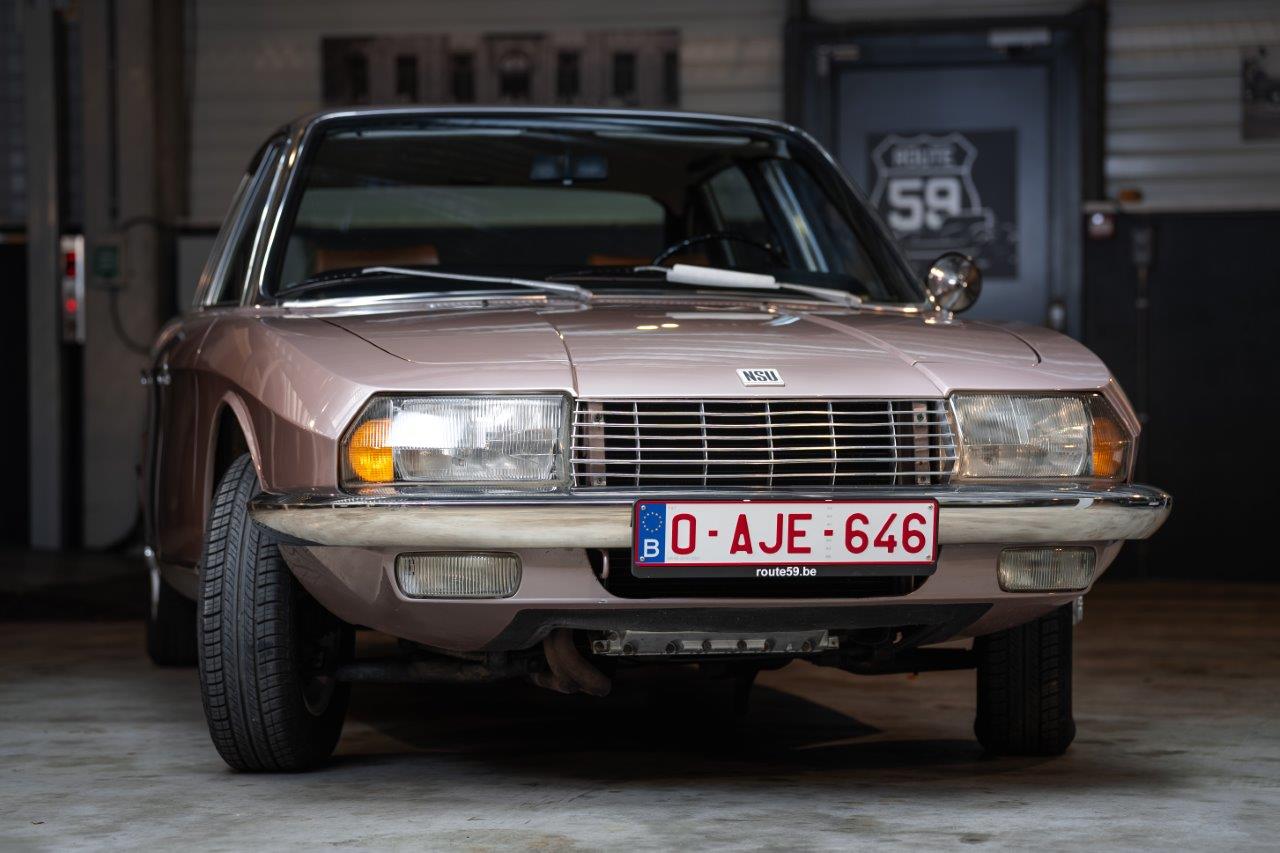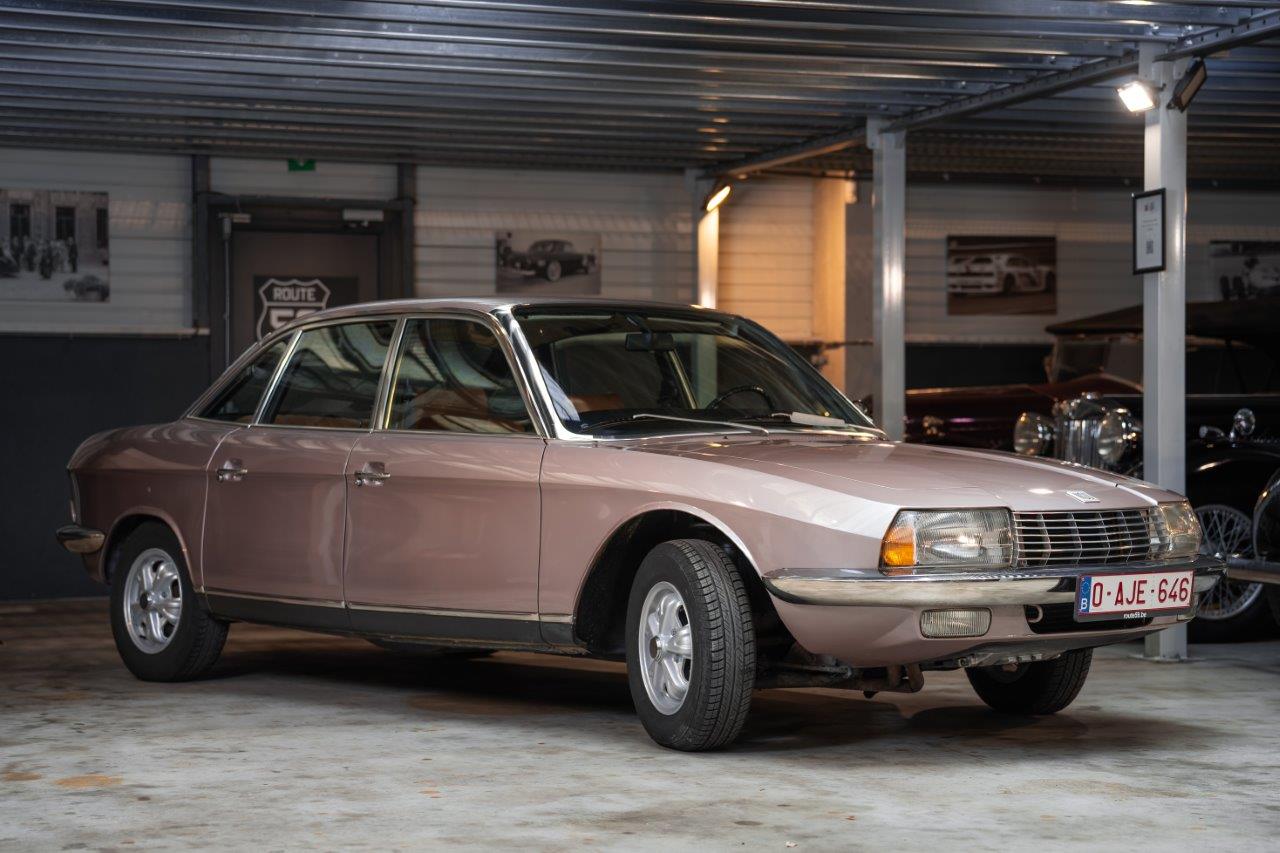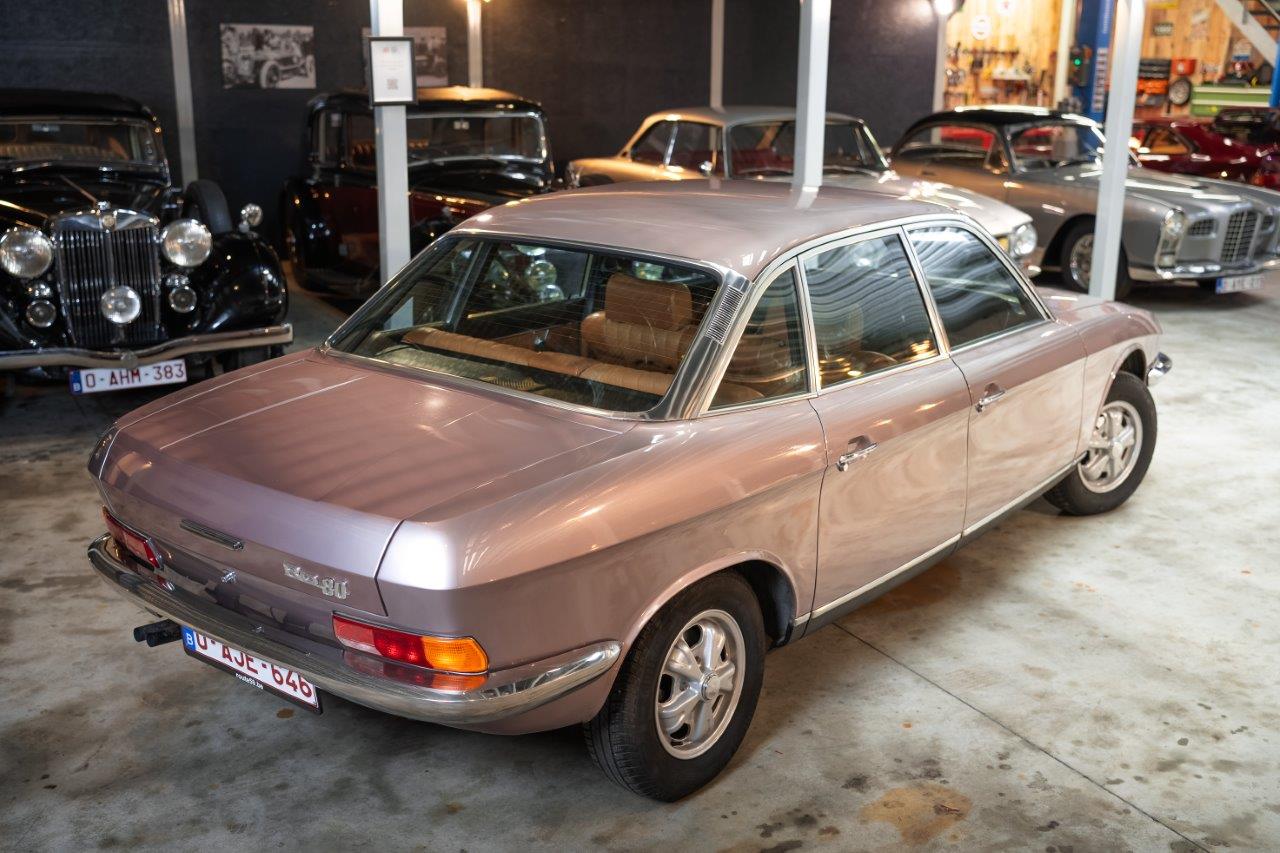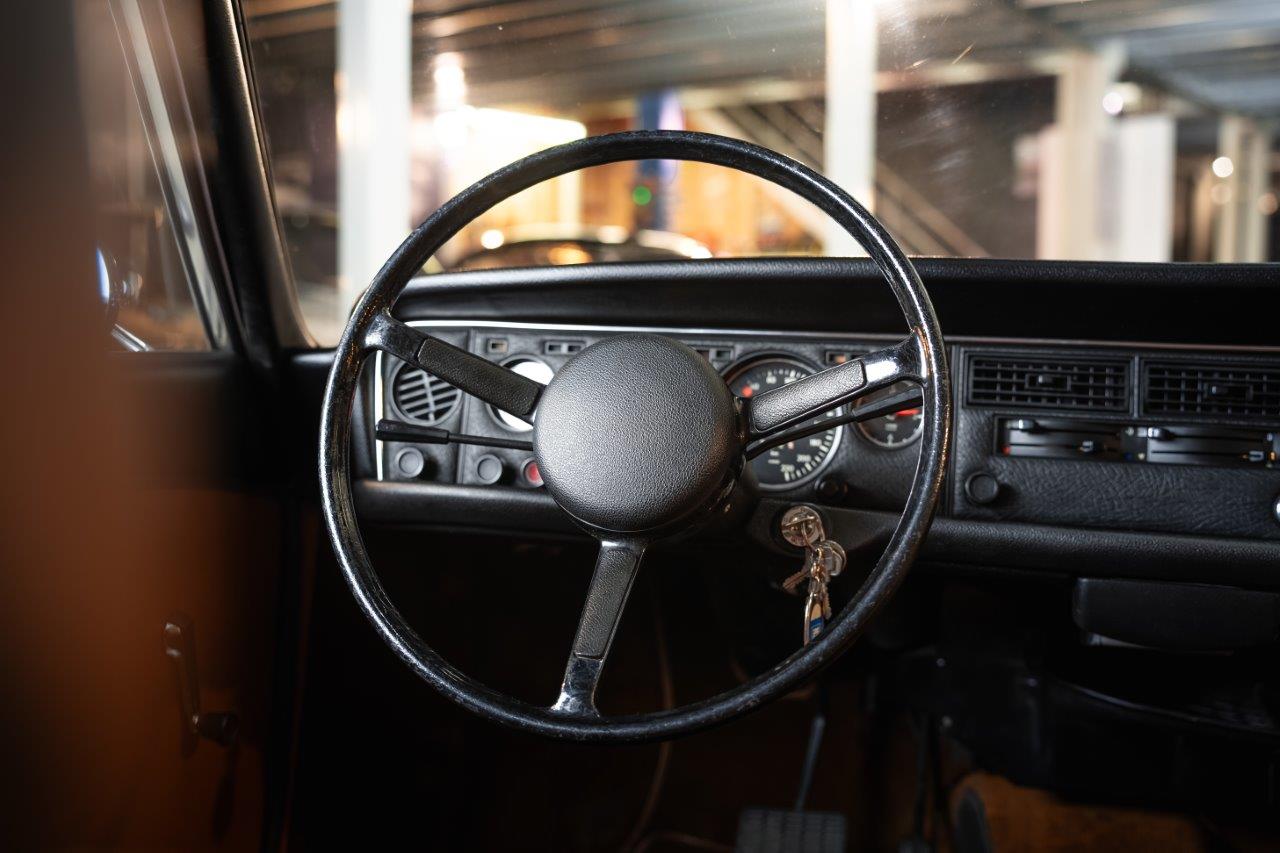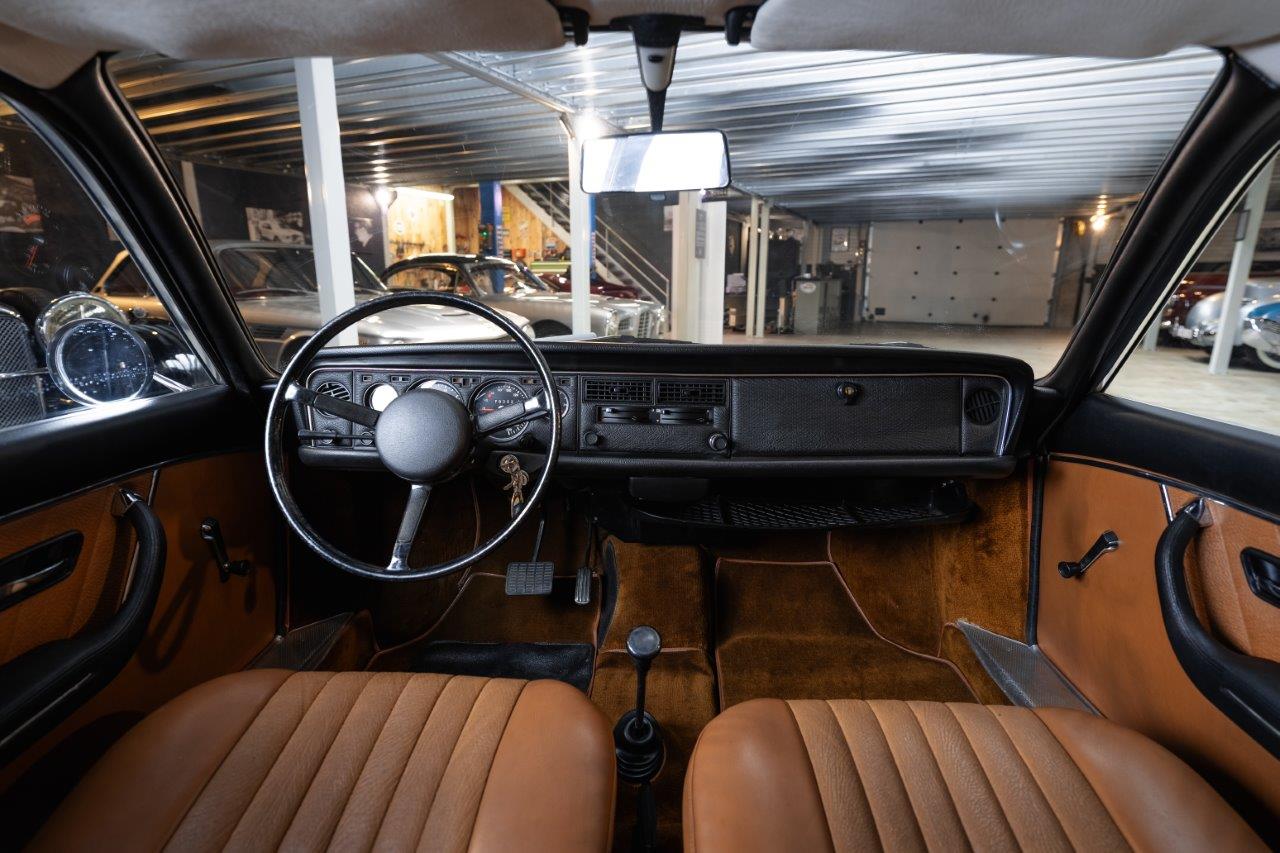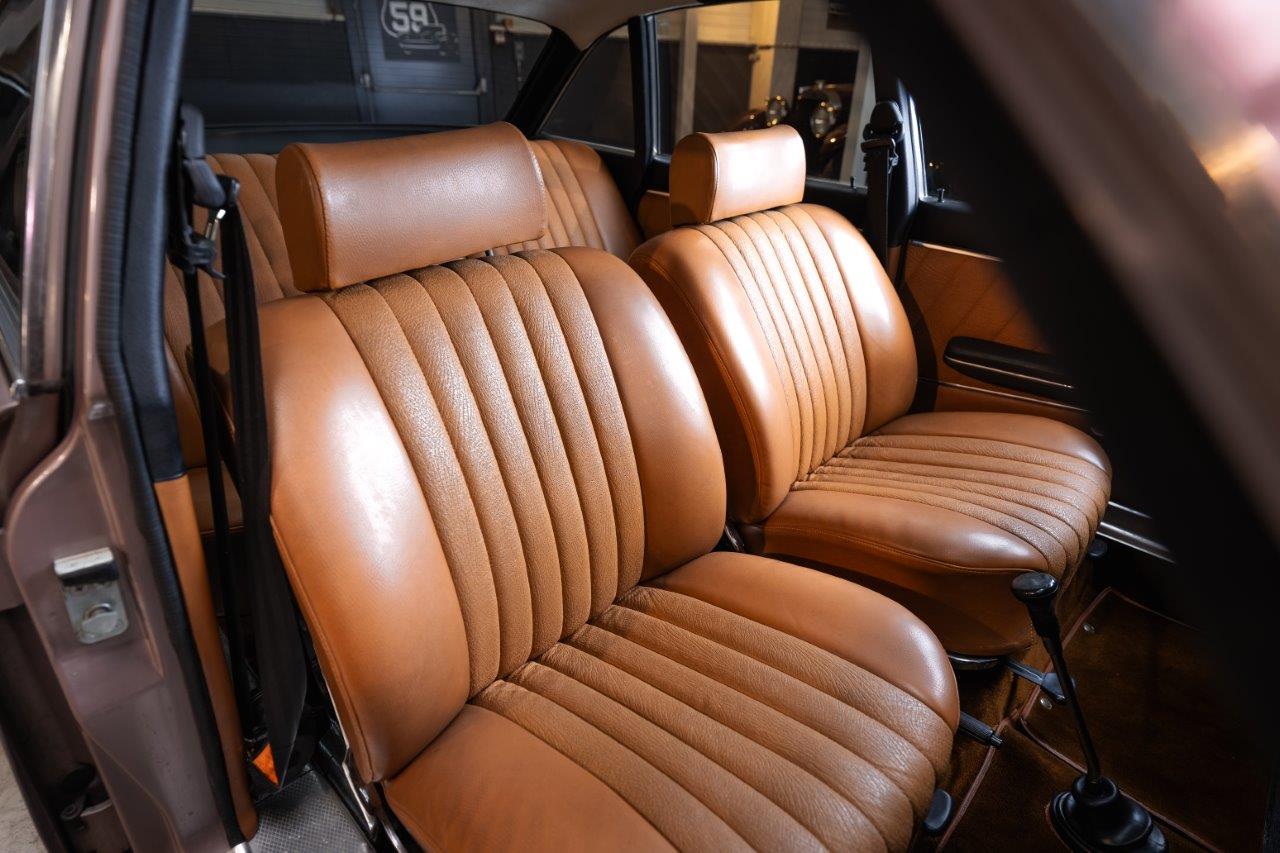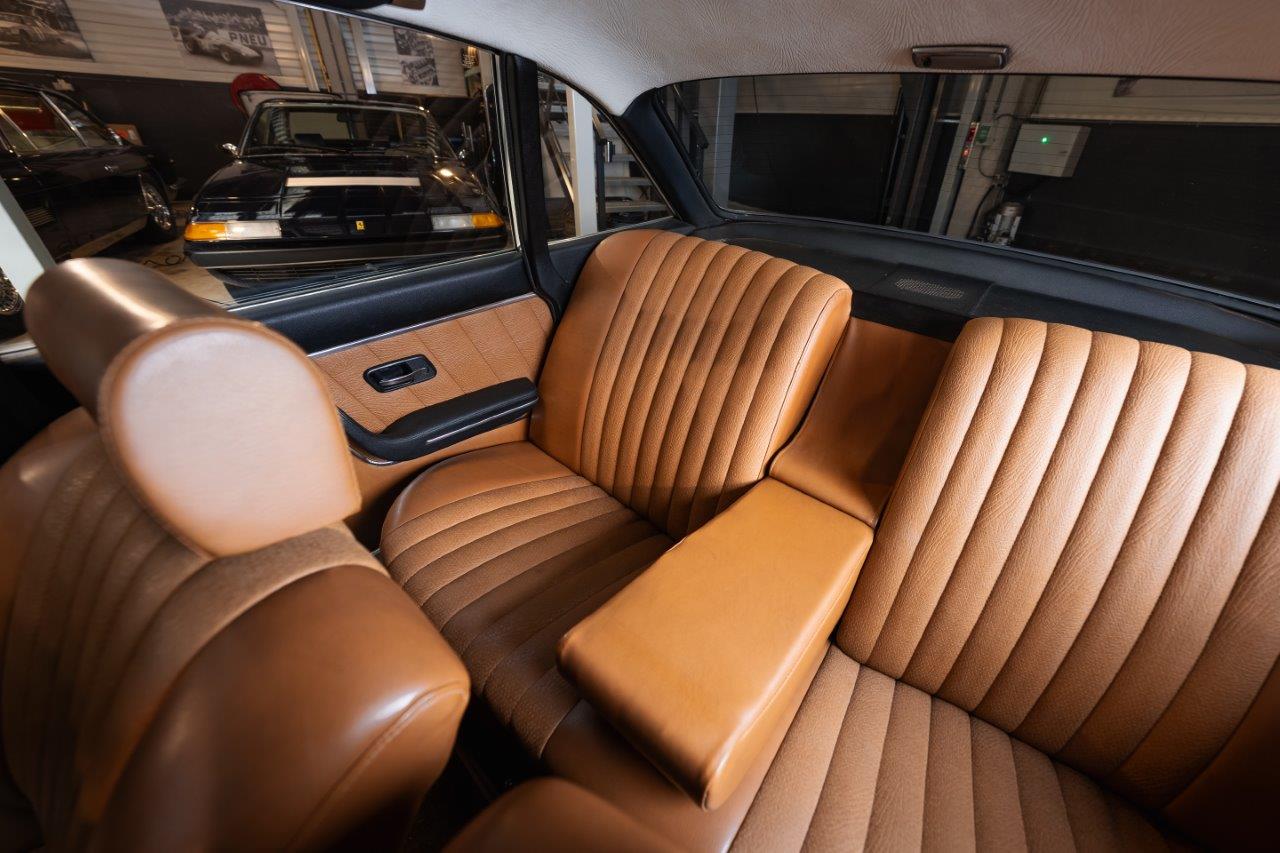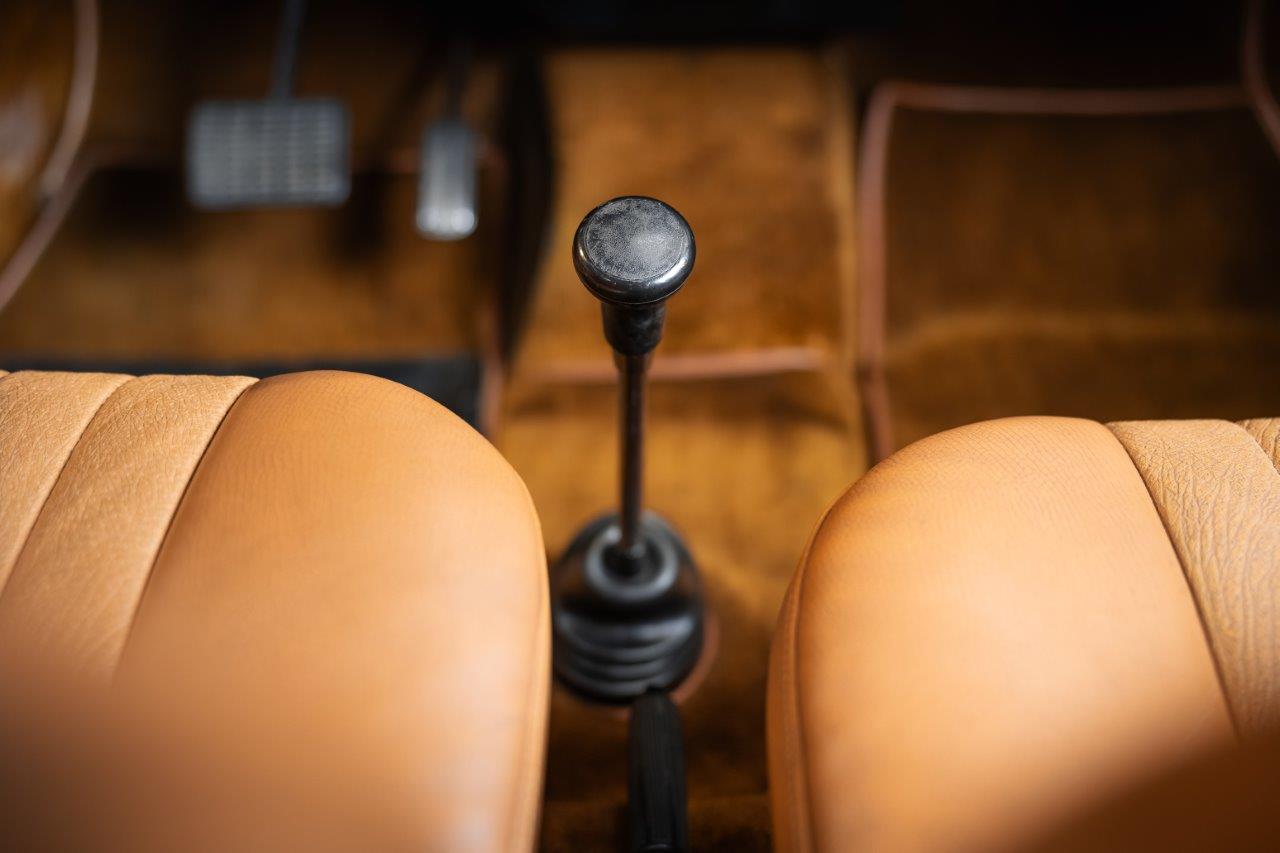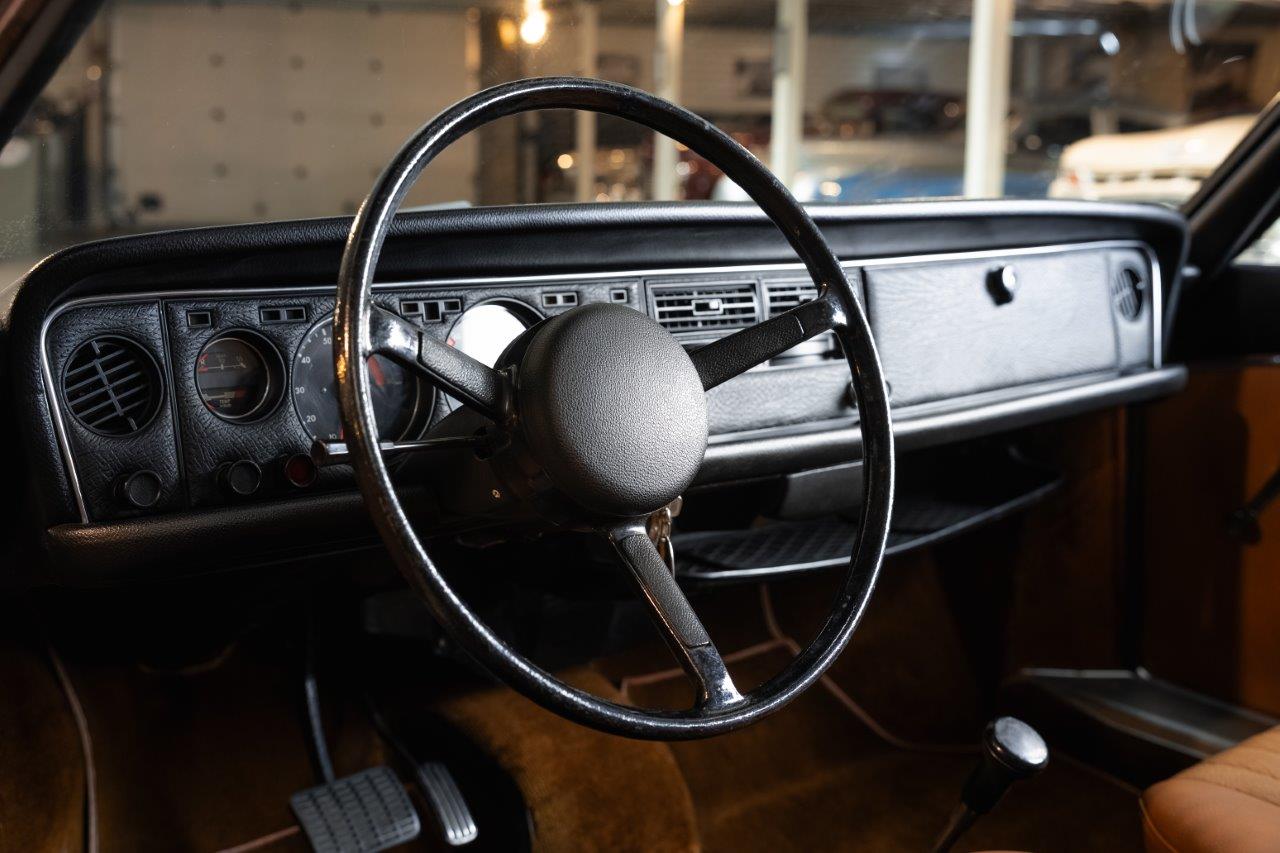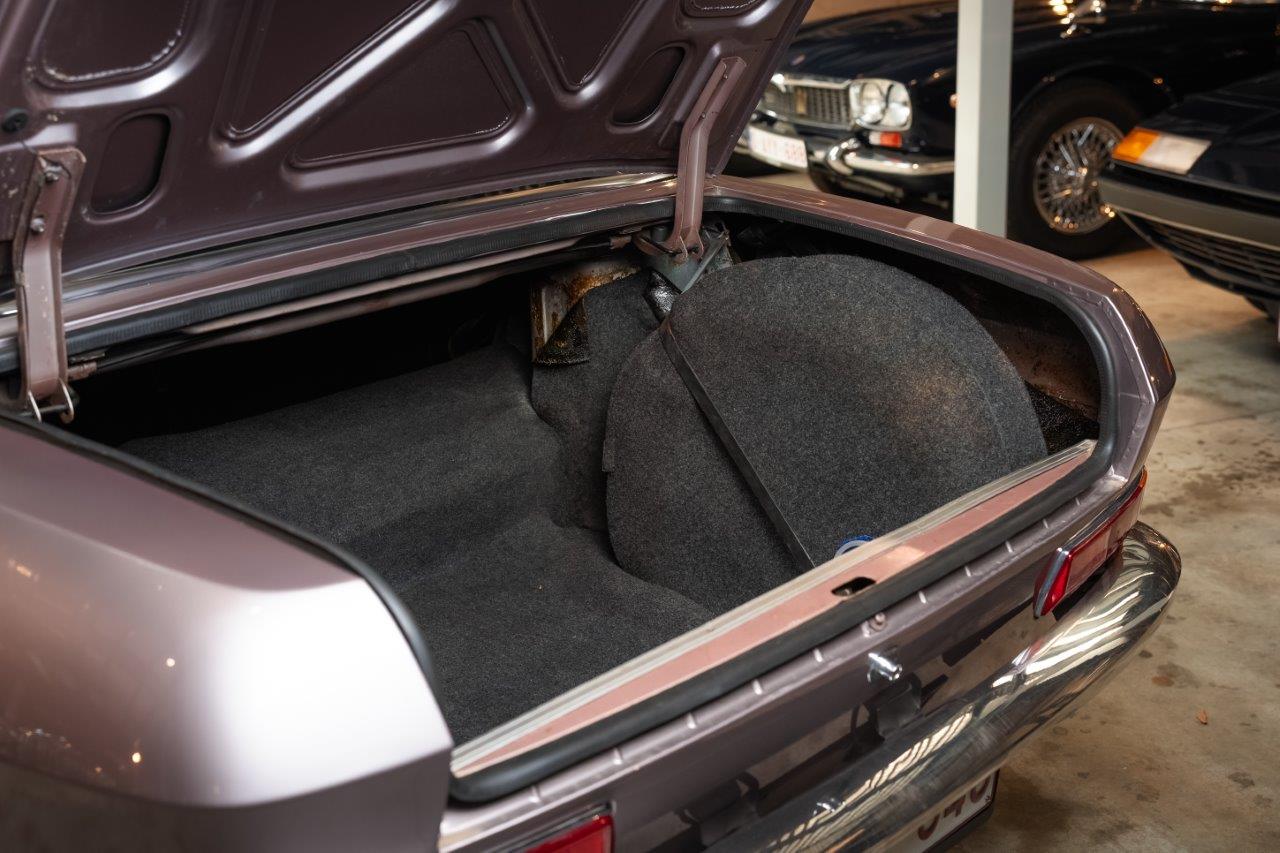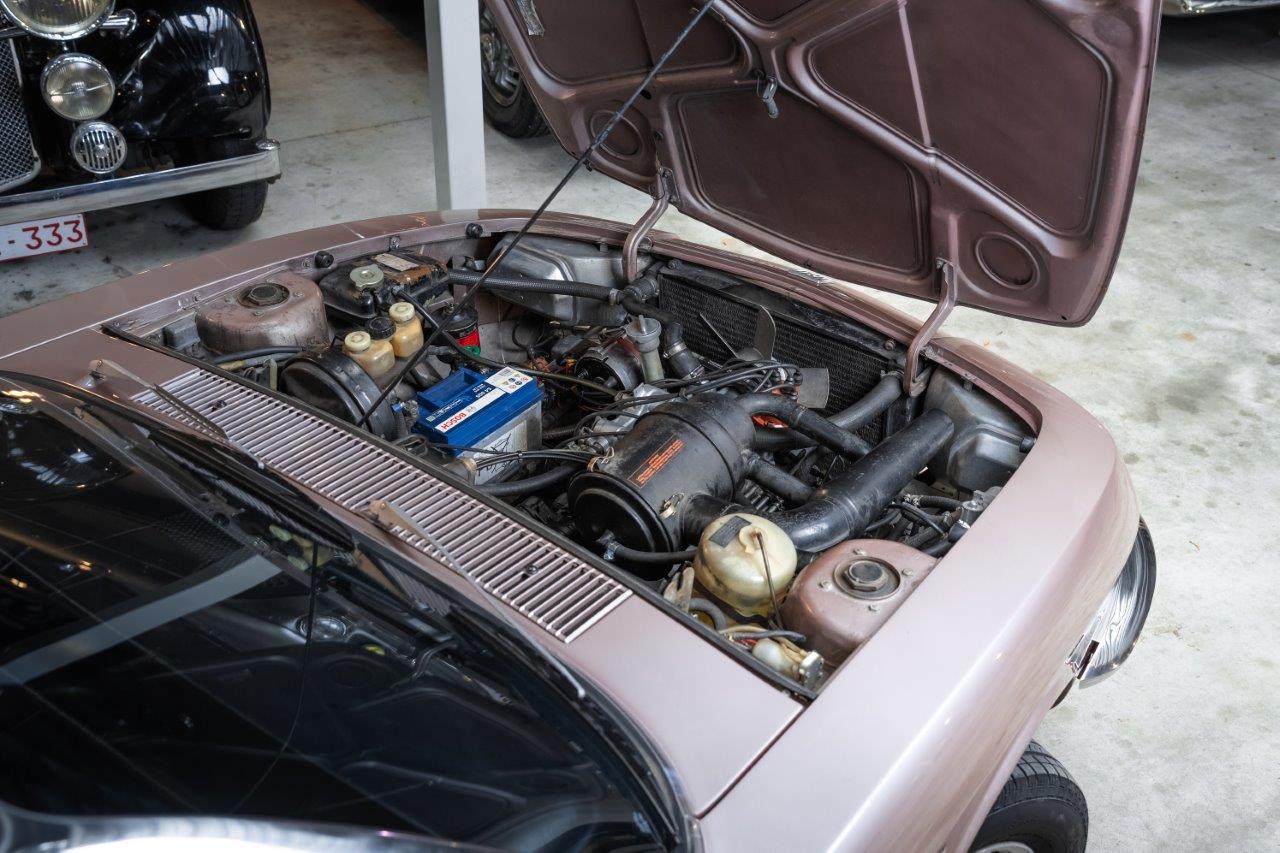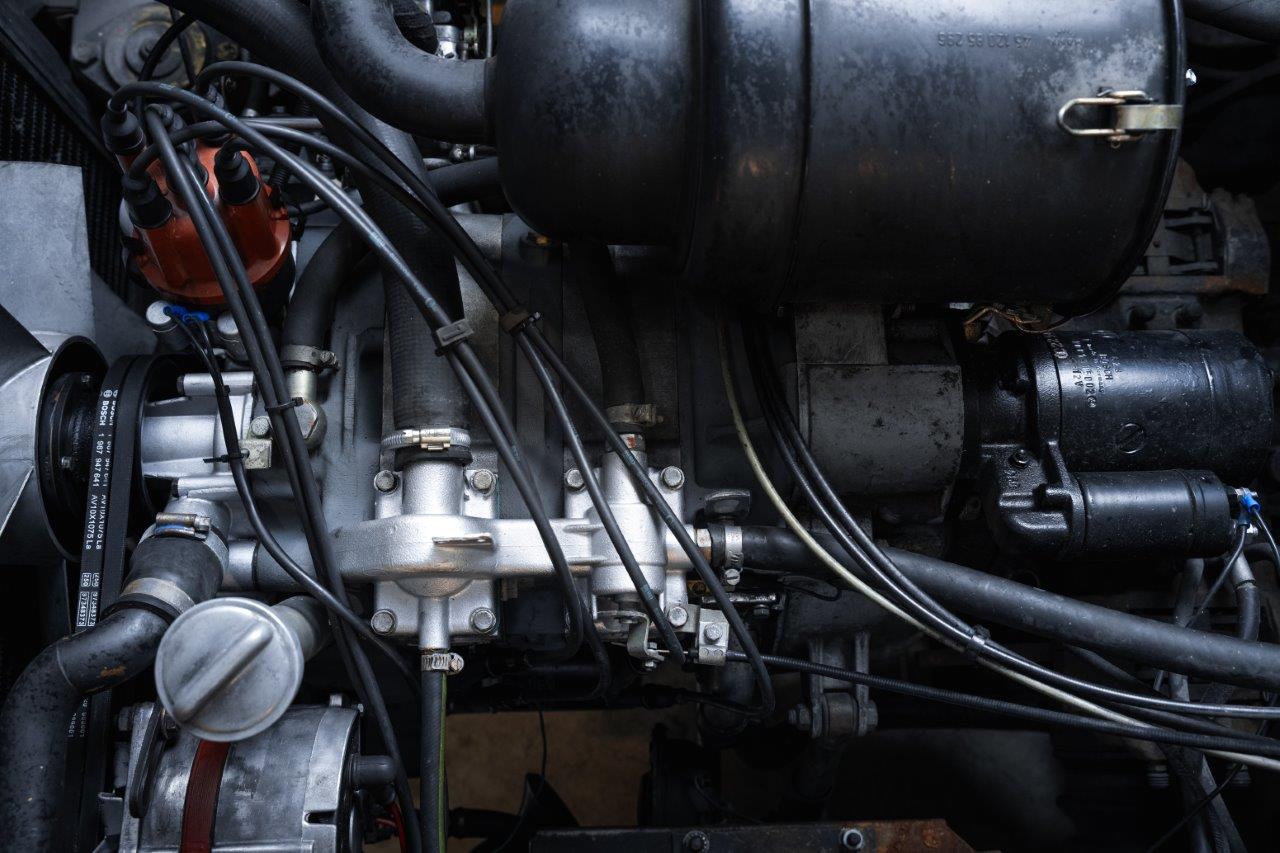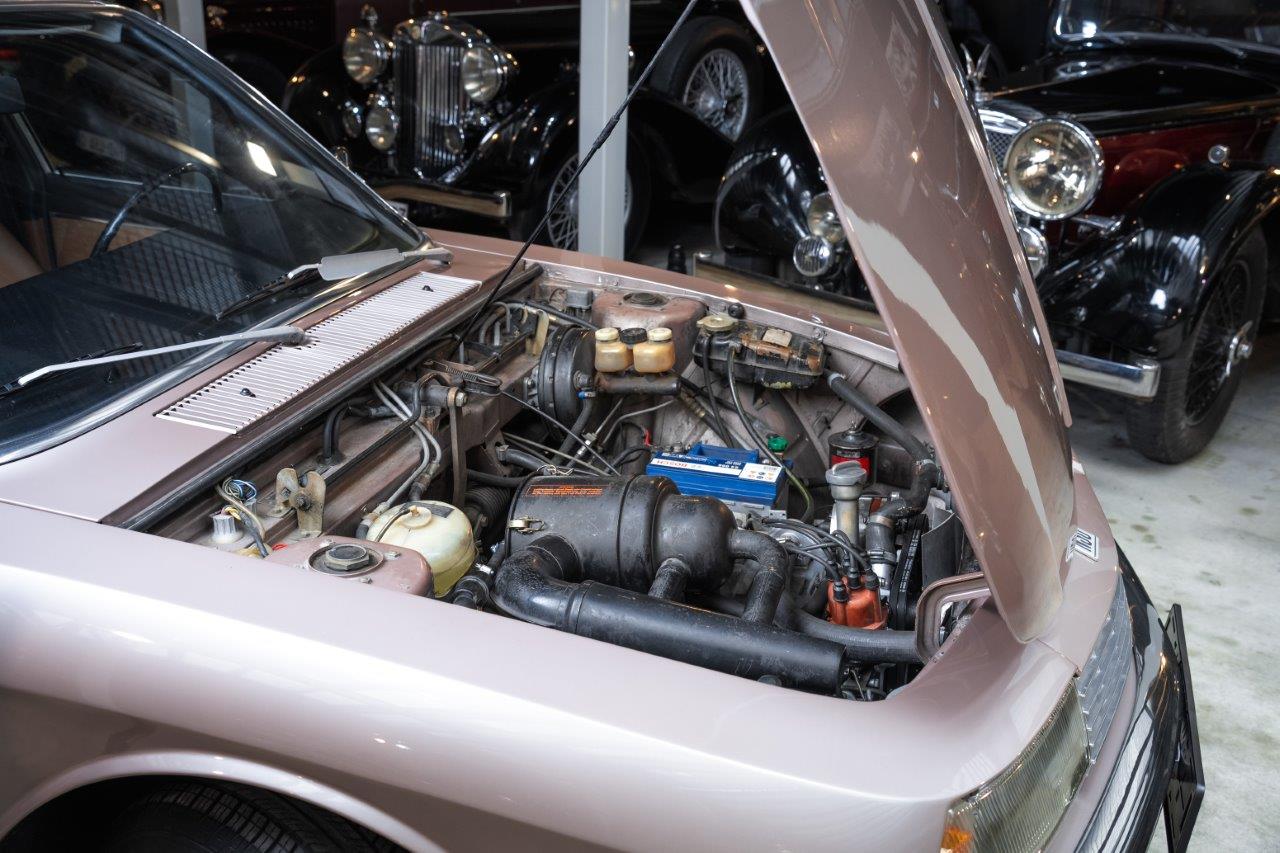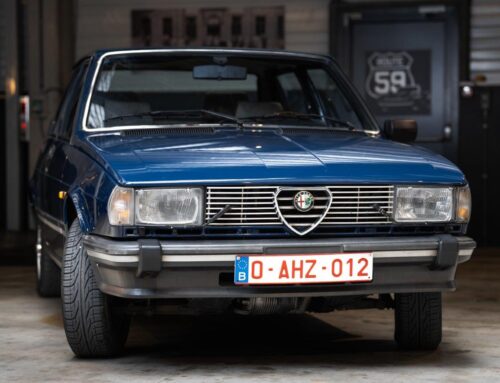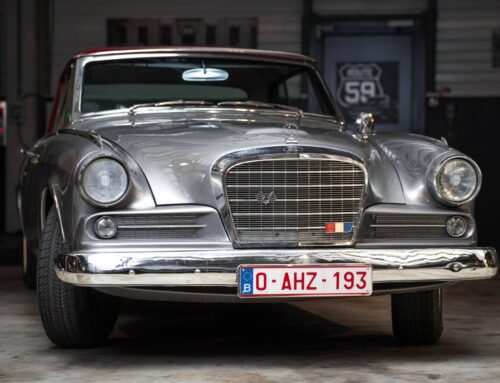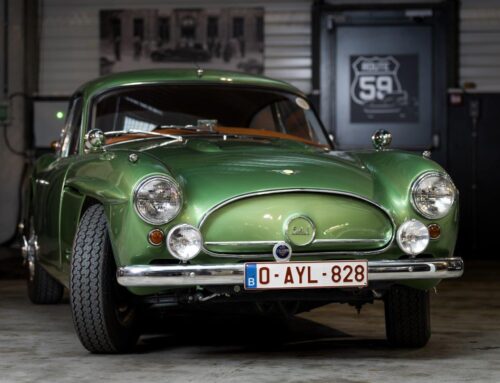NSU RO80
| Brand | NSU |
| Model | RO80 |
| Color | Sepia metallic |
| Transmission | Manual 3-speed |
| Pk | 115 ch |
| Year | 1969 |
| Price | Not for sale |
The NSU Ro80, produced from 1967 to 1977, represents one of the most striking examples of the technological audacity of the German automotive industry in the 1960s. Unveiled at the Frankfurt Motor Show in 1967, it surprised with its fluid and highly aerodynamic silhouette designed by Claus Luthe, breaking away from the aesthetic codes of the “era. But it was above all its 995 cm³ twin-rotor Wankel engine, delivering 115 horsepower, that symbolized NSU’s desire to distinguish itself through innovation. Coupled with a semi-automatic transmission with an electromagnetic clutch, this engine propelled the Ro80 to over 180 km/h with unusual comfort and silence for a sedan of the” era.
In 1968, the car was named European Car of the Year, a sign that the press and professionals saw it as a vision of the future. But the reality of its use quickly highlighted an Achilles’ heel: the Wankel engine, still young in its industrial development, suffered from premature wear of the apex seals. Many owners had to replace the engine as early as 30,000 km, which led NSU to incur significant warranty costs and damaged its public image.
This context occurred while NSU, although renowned for its motorcycles and small cars like the Prinz, did not have the financial solidity of a major manufacturer. In 1969, the situation led to a merger with Audi and Auto Union, under the control of the Volkswagen group, giving birth to Audi-NSU Auto Union AG. The Ro80 continued its career under this new entity, benefiting from minor technical improvements but without completely overcoming its mechanical issues. Despite modest sales, it remained in the catalog until 1977, the year its production ceased after approximately 37,400 units.
The departure of the Ro80 coincided with the end of the NSU brand as an automobile manufacturer, its name disappearing in favor of Audi. However, its influence endures: its design served as a basis for the evolution of Audi’s style in the 1980s, and it remains today an emblematic model for enthusiasts of bold innovations, both hailed as a visionary work and cited as an example of the risks associated with technology too far ahead of its time.


